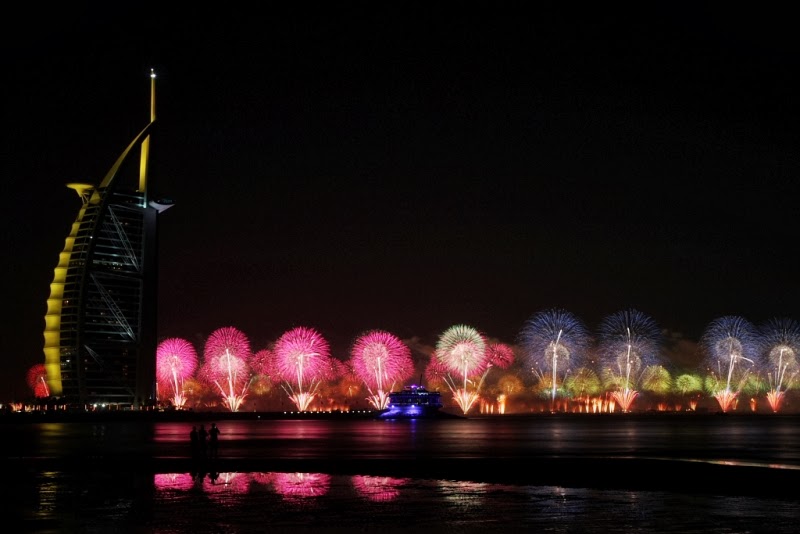
After posting some fireworks photos in this blog and in The Science and Art of Photography, a lot of people were asking me tips on shooting fireworks. They got inspired by the photos and want to go to the 3rd Philippine International Pyromusical Competition and photograph the fireworks display as well. Due to popular demand, here are the tips and techniques I use when shooting fireworks. This is the basic technique to capture photos of fireworks using the light trail long exposure method:
Equipment:
- Camera with Manual Aperture and Shutter Speed Settings including Bulb Mode
- A fixed wide angle lens (~ 24mm full frame 17mm cropped sensors) or zoom with similar wide angle focal length. Kit lens set to the widest focal length are ideal. This is applicable if you are near/mid distance to the venue. If you are very far, you might require a longer focal length
- Tripod: A must to get sharper and better fireworks photos. Can be optional but beyond the scope of this post
- Remote release cable or device (optional but without it, timing can be more difficult)
Location and Setup
- Arrive earlier at the venue so you can survey and get a good spot
- Some prefer fireworks only shoots against the sky and background. For beginners, I advise these to gain experience in shooting fireworks before including foreground elements like people, buildings, and landmarks which makes it more complicated.
- Check direction and velocity of wind. If wind is going towards the camera, smoke will build up and show in your photos. Shoot more earlier in the sequence on non-windy days. The smoke accumulates and the later fireworks will be less contrasty.
- In some events, they usually do test firing of the fireworks. This can be used to compose your framing and test your exposure.
- Remember/approximate the edges of your framing so that you have an idea what will be include or not in your framing. These is useful if you are turning off your LCD preview. Alternative is have your preview on and look at it occasionally for verification or adjustment.
Camera Setup and Settings:
- Mount your camera to a tripod. Watch your horizons to make sure that its not tilted. Adjust tripod legs and head accordingly.
- Connect a shutter release cable so that you can release the shutter without moving the camera. If you don’t have a shutter release cable, you can use the 2-second self-timer. However, this will make timing your shots more difficult. Make sure that your camera is off before connecting or disconnecting any attachments.
- Set your camera to Manual (M) mode
- Use the lowest ISO possible, usually ISO 100, to get the least noise and get cleaner, higher contrast shots.
- Set focus to manual. Autofocus might not work as fast and you will miss a lot of shots. Focus on the distance where the fireworks will be fired. If you can locate the launching pad, focus there or anywhere in the similar distance. This most of the time is far and focus to almost the lens infinity settings. Also remember that if you zoom/change your focal length, please re-adjust your focus.
- Adjust to White Balance to Daylight or Tungsten. Tungsten will give the true color but some people prefer daylight for the warmer colors. I usually shoot RAW so I can choose later which WB matches selected photos, in addition to insurance to exposure issues.
- Set the shutter speed to Bulb (B) settings. Bulb mode allows you to control the how much time the shutter will be open to expose the picture instead of using a fixed shutter speed
- Set aperture initially to f/11. Fireworks are usually bright and can be photographed with smaller apertures. The aperture should be adjusted in relation to the brightness of the fireworks. Open-up (bigger aperture hole, lower number) to f/8 or more if your initial shots does not look well exposed. On the reverse, stop-down (smaller aperture, higher number) to f/16 if your shots look over-exposed.
- Adjust camera framing portrait or landscape. I usually use landscape for wider shoots and crop them latter to get portrait shots or take only a few portrait shots. Make sure you leave some space for bigger shells and wider multiple shells explosion. Since your camera is mounted on a tripod, it’s not advisable to be switching to portrait/landscape mode because it takes time to switch and lose some of the fireworks.
Actual Shooting
Press the remote release button to start exposing and hold it pressed. As long as you don’t release the button, the shutter is open to capture the fireworks. Release the button to finish exposure.
Press the button when the firework is launch or about to explode and hold the button pressed until firework shell finished exploding. This usually last a few seconds. Your timing of pressing the button will results in these two variations:
Please note that some of the fireworks actually do not create a light trail when launch but only when they explode. So timing variations to create launch trail does not apply to these type, however, timing is still important to press just before or on the explosion to create a better explosion light trail (flower light trail)
The number of layers/overlays of fireworks depends on two factors:
- the rate of firing (how often the fireworks are launched)
- your exposure time (how long before you released the button after pressing it)
During the slow rate of fire, make your exposure short 1-3 seconds for simple layered shot.
Alternatively, expose longer, 4-10 seconds for multi-layer (3 or more fireworks sequence)
Just be careful not to expose to long especially if there are repeating shots in the same area or a sequence of fireworks in the base like fountains. This will lead to overexposure.
Near the finale or in some peaks of the performance (and sometimes in the Intro!), the rate of firing will increase so you will get more layers of fireworks even you expose shortly. This was in the finale so even in 2 seconds of exposure, the photo had more layers.
Track results every few batches to make sure there are no issues in focus and exposure.
Remember if you zoom in or out, check your focus again.
Adjust aperture accordingly to adjust to intensity of fireworks. There are weaker fireworks at slow parts and very bright explosive ones during the finale.
Since you are shooting with a digital camera, take a lot of photos since it’s no cost anyway. Try different varieties: simple layer, multi-layered, wide shots, zoomed shots, etc…
Shooting fireworks is fun and easy! Enjoy shooting your fireworks display.

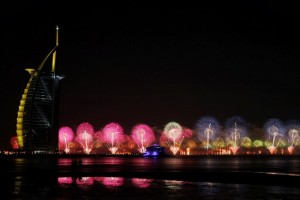
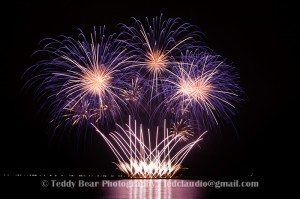
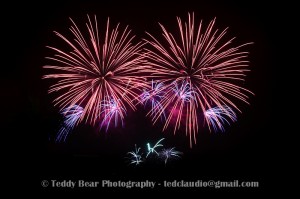
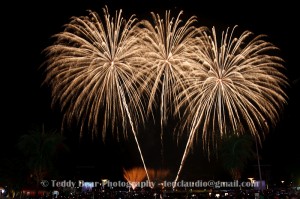
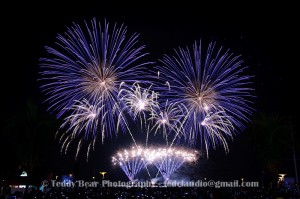
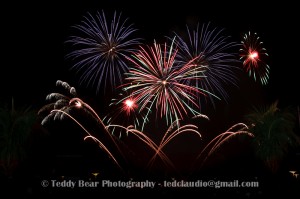
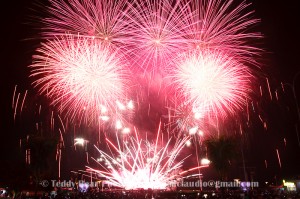
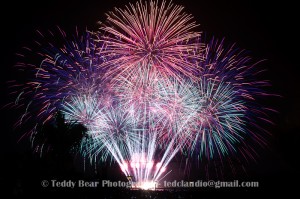



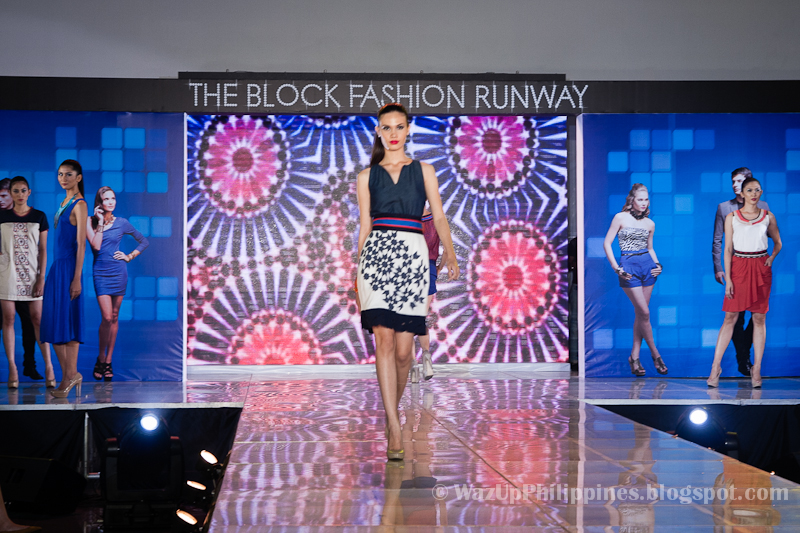
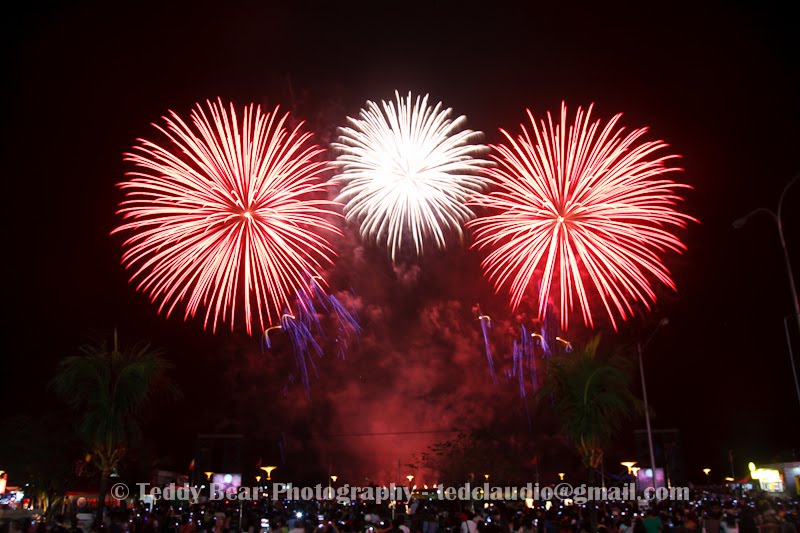


Yay, I’m ready for this year’s New Year already with this guide
thank you for this guide.. gonna try this one too
woohh this a must read for budding photographers. And the photos above walks your talk, Ted.
Will take note of this tips as I do take some pictures of fireworks during new year.
takes for the tips! hindi kasi talaga ako makakuha ng magandang shot ng fireworks
Great tips! and nice firework shots.
wow! thanks for the tips! I also love fireworks but the thing is.. it’s prohibited here in Davao.. great pictures btw..
Awesome guide! I’d need a cable remote though. I hope Santa will send it to me
I love it. New Year is coming and this tips will help me a lot as I shoot for my own artistic fireworks shots
thanks for the guide. this will be very useful especially for New Year and the Pyro Competition
I always wanted to venture into photography but I think the talent is not in me You did a great job is this tutorial and I might suggest it to my friend who is now focusing on peephole photography
You did a great job is this tutorial and I might suggest it to my friend who is now focusing on peephole photography 
Fireworks photography seems to be hard for us, noob photographers. Thanks for your tips!
WOW! I wish I will have a nice camera and the talent to capture fireworks like the photos above.
cool fireworks shots. pinost-process niyo pa po ba ito or straight from the cam? instead of using manual focus, mas prefer ng iba yung infinite focus kasi mas maganda ang results ng trails ng fireworks..hehehe
Thanks for the guide. How I wish I have my own camera before the New Year comes.
Great photos
that’s a great output … will do your tips… i hope my camera will cooperate as well